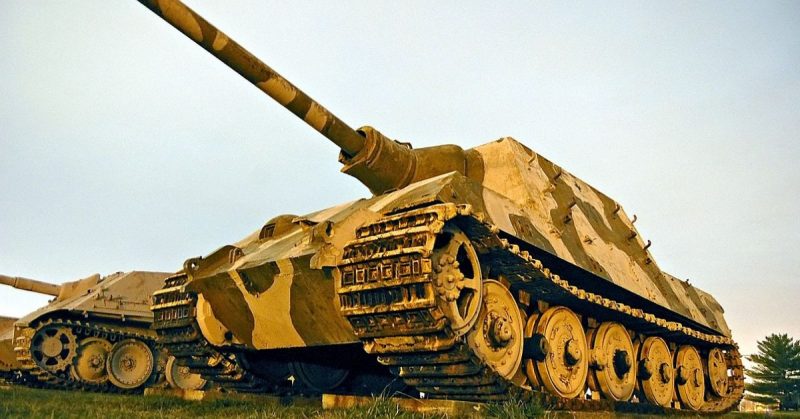Throughout the Second World War, Hitler had had an almost myopic preoccupation – some might say obsession – with trying to win the war by designing and building the biggest, most outrageous weaponry.
Some of these audacious concepts never made it past the drawing board, while others, like the famous Maus tank, the largest tank ever built, only just made it to production, with a handful of models being built before the project was abandoned due to impracticality.
Some of these ideas did go through to mass production, though, and one of these was the huge Jagdtiger tank destroyer. It was the heaviest beast that was used on the battlefields of WWII, and when used in the kind of battles it was designed for, it was a force to reckoned with. In the battle at Chaumont in December 1944, for example, four Jagdtigers destroyed eighteen Sherman tanks without taking a single loss themselves.
While extremely formidable in the right conditions, though, the Jagdtiger ultimately turned out to be yet another Third Reich idea that was too impractical to work in reality.
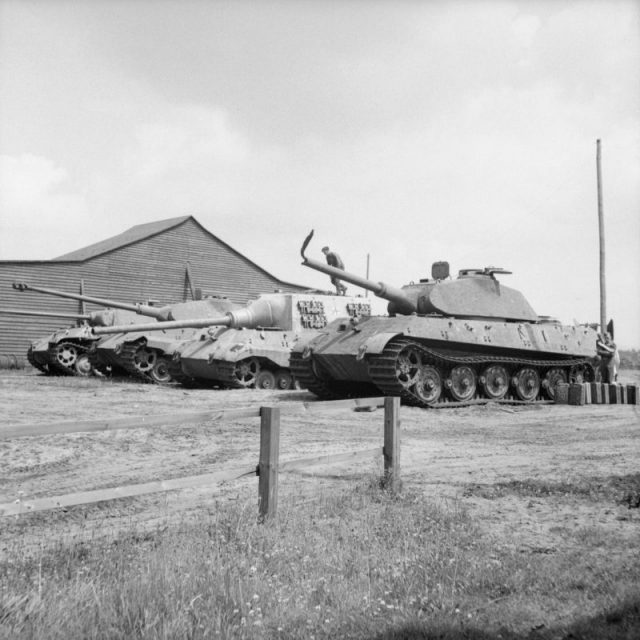
What allowed the Jadgtiger to utterly dominate the battlefield was a combination of its immensely powerful armament and its almost impenetrable armor. The Jagdtiger’s main gun was a 128mm Pak 44 gun that fired gigantic sixty-five-pound shells.
One hit from one of these shells was almost guaranteed to take out any Allied tank, and the shells were effective at very long ranges – they could quite easily immobilize an enemy tank at ranges of around two to three miles. If used for indirect fire, these shells had a maximum range of almost fifteen miles.
In addition to this monstrous main gun, the Jagdtiger had a machine gun, and sometimes an anti-aircraft gun on the back.
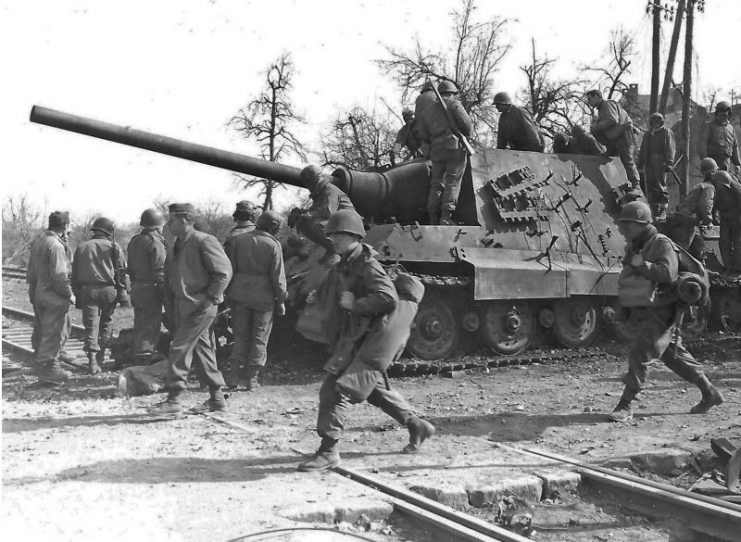
The armor around the housing of the main gun was a massive 250 millimeters, which no Allied tank round could penetrate. The Jagdtiger was not, however, invincible in the armor department.
Covering the entire vehicle in armor that thick would have made it too heavy, so armor around the lower hull was 150 millimeters, and the sides and rear 80 millimeters. This meant that if a Jagdtiger could be flanked, it could be taken out from the side or rear – or from the top, by aircraft. Still, if the Jagdtiger was advantageously positioned on the battlefield, it would be tremendously difficult to take out one of these huge tank destoryers.
The Allies discovered this the hard way on more than one occasion. For example, on March 22, 1945, a Jagdtiger unit consisting of three ambushed an Allied armored column outside Neustadt. Theymanaged to take out twenty-five Allied tanks before retreating into Neustadt.
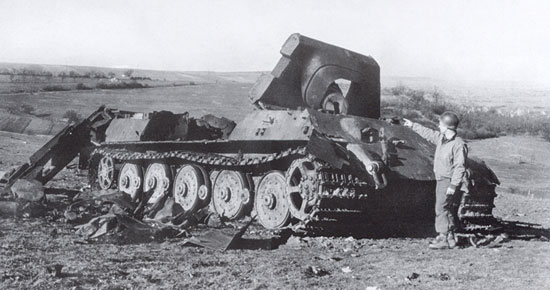
Of course, for all its prowess on the battlefield, the Jadgtigers ultimately made little difference to the outcome of the war. A popular cliché states that a chain is only as strong as its weakest link, and for the Jagdtiger, the weakest link was its motor – or, rather, a motor that would have been adequate for a smaller tank, but was simply not built to haul a behemoth like the Jagdtiger.
The huge machine weighed in at 79 short tons (and a couple more when fully loaded), and the motor used to move this gargantuan mass of steel and machinery was the Maybach HL 230 P30 – a 690 horsepower motor that was used on the much smaller Panther tank. While this motor was fine for moving the Panther around, it struggled enormously with the huge mass of the Jagdtiger.
This put an almost crippling limit on the Jagdtiger’s mobility. Due to the enormous amount of fuel it used, its range was only around sixty or seventy miles at the very most, and breakdowns – owing to the strain placed on the struggling motor – were frequent.
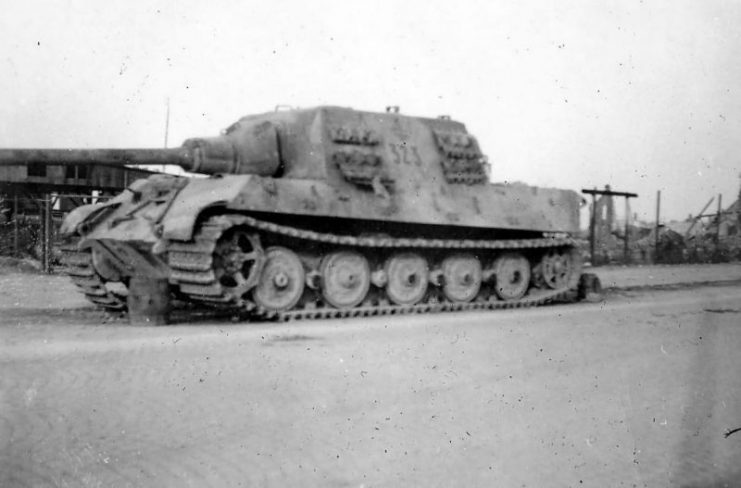
The huge gun, too, proved to be an Achilles’ heel of sorts. Even a short amount of off-road driving would cause the gun to wobble around so much that it would need to be recalibrated, and turning the gun, which had almost no traverse movement ability, meant turning the entire machine.
And speaking of off-road travel, this was again an area in which the underpowered motor let the whole vehicle down. On soft ground or in mud the Jadgtiger was likely to get stuck, and if this happened the crew had little choice but to abandon their machine.
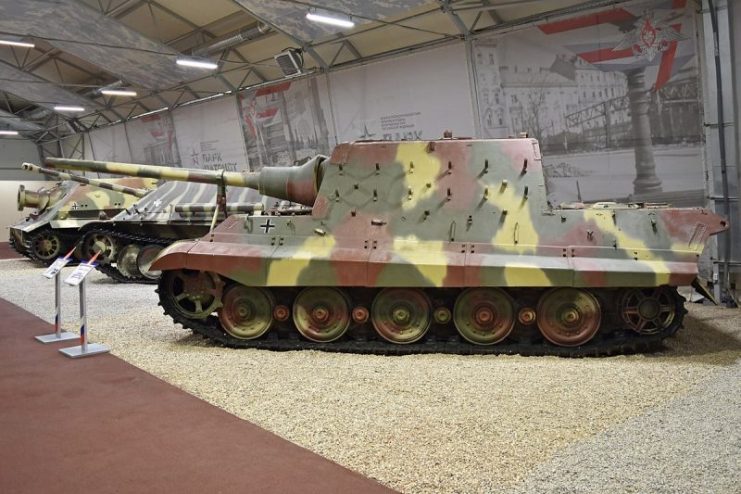
The Jagdtiger was produced in the latter stages of the war, when Germany was already beginning to run low on fuel and raw materials for production. The design was only finalized and approved for production in late 1943, and while mass production began shortly thereafter, the production process was far more labor- and material-intensive than that of producing smaller tanks like the Panther or Tiger models.
Germany simply couldn’t afford to produce Jadgtigers at the kind of pace, or in the sorts of numbers, that would have really made them a force that could have changed the course of the war.
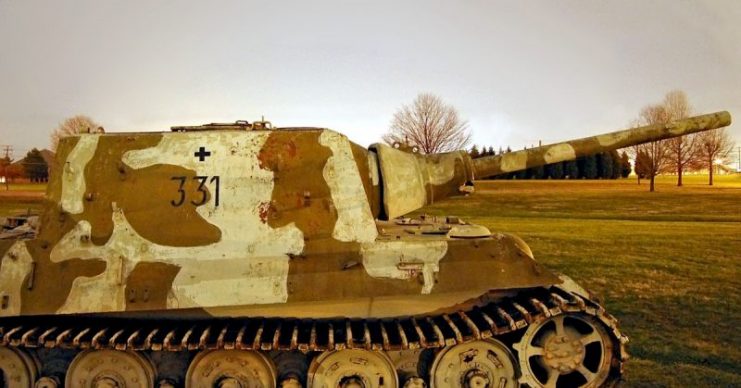
And then, of course, there were the design flaws themselves: the extremely limited traverse of the main gun, the underpowered motor, and the unreliable transmission.
Read another story from us: The Destroyer of Beasts: ISU-152 Self-Propelled Artillery
Perhaps if German engineers had had more time to plan out the design and had been under less pressure to get it done quickly, and if this had happened far earlier in the course of the war, when fuel and raw materials were more readily available, they would have been able to produce a near-perfect Jadgtiger design that would have made a real difference to the outcome of the war.
Fortunately for the rest of the world, though, this never happened.
